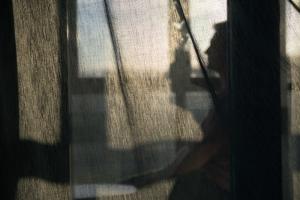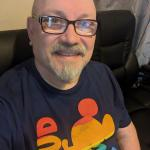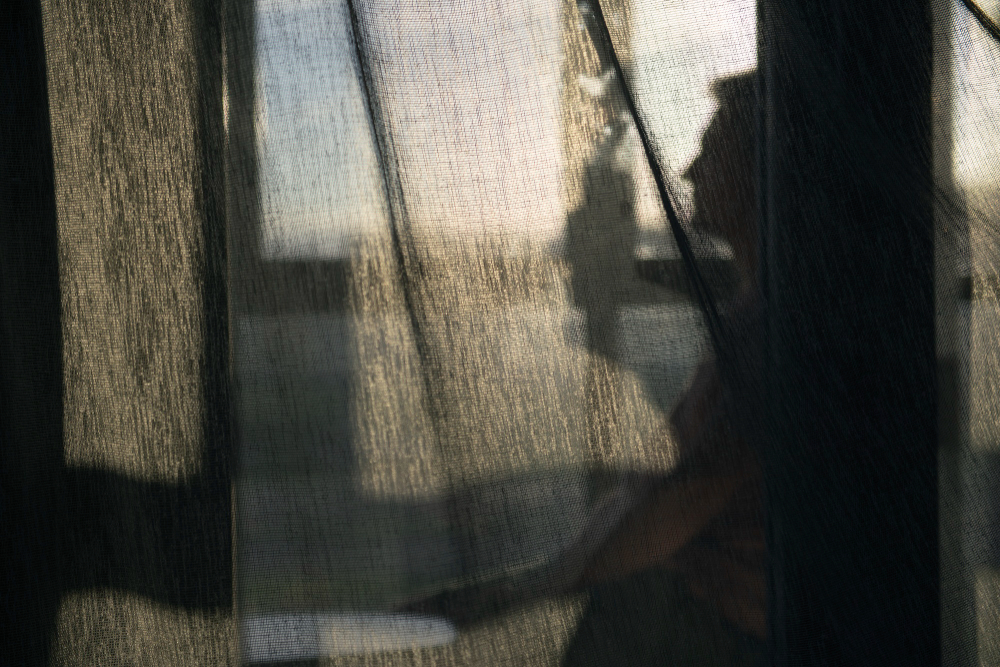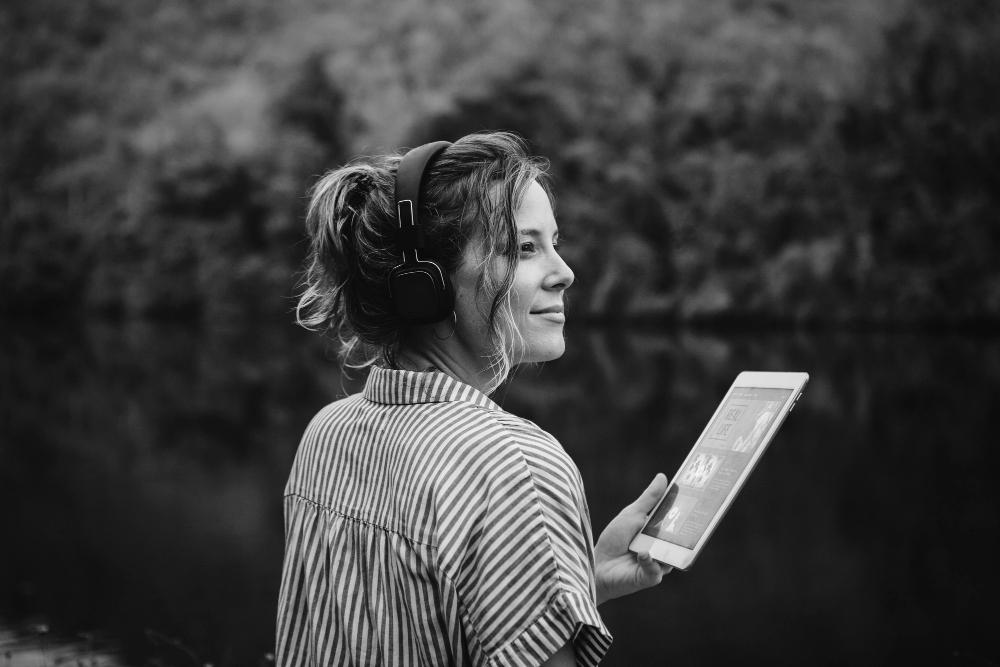Darkness and Shadow – Part 1 – Karl

(From our new book, Evolving From Religious Trauma. June 4th))
Listen to Audio – AI-Generated
Karl
In 2021, I worked on an assembly line. To get Saturday off, I had to take ½ of Friday off to ensure they didn’t schedule me for Saturday. It is a clever way to have an extended weekend without using more Personal Time Off (PTO). I was often excited to start a long weekend, but I did not feel much like working those few hours to earn the right to leave.
We cannot avoid challenging work. Whether it is addressing trauma, getting healthy, or building lawn mower engines, there are a necessary number of difficult things. We assume things can be avoided, but they do not go away. The outside wall of my house, where the paint is peeling, will only worsen over time. If I do not address it, it will eventually cause further damage.
A great revelation for me was spiritual bypassing. Religion often searches for magical answers and avoids doing the necessary work to heal. Dealing with trauma is uncomfortable, so we use religious phrases and platitudes to avoid the messy but necessary work that could heal us.
One reason we avoid challenging work is our obsession with light. In our dualistic mindsets, we categorized everything difficult and not easily understood as darkness. We focused on what we considered light and trusted it would extinguish the darkness.
There are things to be frightened of, but we cannot avoid everything we do not understand. Often, the things that trouble us most are unresolved issues that we have been avoiding. They may seem like darkness and something to be avoided, but they could be the key to our future well-being. I described this process in my book, Being: A Journey Toward Presence and Authenticity. Because I avoided these dark places within me, they all surfaced simultaneously. When they emerged, it was much more traumatic to encounter them.
When I finally faced this part of me that was wounded, I discovered that it was much more like a traumatized younger version of myself than a giant, horrible monster. I am not even sure that Satan and demons even exist anymore. I now wonder if much of that imagery was created in our minds when we tried to describe what it felt like inside. It is perfectly plausible that our internal demons are little more than internalized shame and unresolved trauma.
Many times, this surfaces as reactivity. Someone would say or do something that caused a reaction in me. I would react like something was controlling me, and in a sense, it was. A part of me was trying to resolve past hurts and unresolved feelings. Because I was reacting, my responses were not rational, and often, what I did only made it worse. The encounters usually ended with me pushing the emotions down and returning to my life, where I ignored what seemed like darkness and searched for new beacons of light and hope.
Eventually, I could not push it down anymore. I had to face the darkness and bring it out. To make a long story short, because I made space for this traumatized little boy, that part of me was able to heal, and I could move forward. I did not eradicate that part of me. I had compassion for it and was present with it until the stuck part could shift to something more integrated with my existence rather than being a part of me that was trying to get my attention. We call this process focusing.
A Focusing Method
I have mixed feelings about prescribing steps to people. Life is messy, nuanced, and hard to describe with a formula. Sometimes, it is more helpful to describe our lives as journeys so that we can keep perspective on the many twists and turns. But sometimes, we find useful things and share them with each other. The trick is not to fall in love with methods, beliefs, techniques, or even practices.
I learned about focusing from several people and Eugene Gendlin’s book of the same name. Dr. Paul Fitzgerald has been instrumental in my life and shared many ideas about focusing that have been revolutionary in my healing. Focusing can happen alone or with a companion. I recommend the latter if possible because an empathetic listener helps to improve the effectiveness of the focusing method. The method originates from Eugene Gendlin, the founder of Focusing, and has been utilized by many.
-
Preparation
Make sure that you are breathing deeply. If you have ever done a body scan in your meditation practice, use that method to let go of any felt tension and let it fall off. Some find it helpful to place their thoughts into a container. I imagine a box where I can put all my thoughts away, much like picking up toys at night. In addition to thoughts, I may notice feelings vying for my attention. I try not to judge them. I notice what I feel and where I feel it. The room should be quiet and free of distractions.
At this point, the companion might ask the focuser to identify a word that describes the feeling.
-
A part of me feels
It is helpful to state clearly, “A part of me feels…” and insert the tag that best describes your feelings. The critical part of this description is that it describes what you are feeling in your terms. It is also helpful to note that this feeling is not all of you, but a part of you trying to teach you something and hopefully resolve itself.
The companion might respond, “So, a part of you feels…” and insert whatever you said. Many times, the person will continue with more detail about the feeling. Continual focus should be on what the person is responsible for. Other people who contributed to the feeling are essential, but now it is most helpful to stay with what you are feeling.
Peter Levine calls the feelings sensations when he describes the felt sense and mind/body connection, “The felt sense is a medium through which we experience the fullness of sensations and knowledge of ourselves.”[1] His Somatic Experiencing is similar to focusing and helps “increase somatic (body) awareness and intelligence and to help you better listen to all the ways your body communicates with you.”
The companion may ask several times if this is still the correct handle to place on the feeling. It is okay if it changes several times. When the feeling or emotion is identified, we can move forward.
It is also helpful to identify where we feel the emotion in our body and place a hand where we feel it. This may be in the throat, heart, gut, or other places throughout our body. Again, this may change places throughout the session. This is okay if we track it. Be present, and refrain from judging what is there or where it is.
-
Be with that feeling or emotion
The companion might ask, “What is it like to be with that part of you that feels? Some people use the phrase, “Say hello.” Acknowledging this felt sense of a part of yourself may let it know that you are paying attention.
Often, being present does not mean that we are doing anything. I noticed this with my children. Sometimes, my offspring were hurt, and there was nothing I could say or do to help them. In those times, the best thing I could say or do was just be there and be with them. In a sense, focusing is being with the part of us trying to share what we may not be able to describe with words.
Again, this step is not a judgment in determining whether this feeling is good or bad. We are not trying to categorize it as darkness or light. In a way, we are building a relationship with something that needs our attention.
-
Invite interaction with inner characters
Sometimes I ask, “Talk about the most recent time you felt this,” then “Talk about the first time you felt this.”
Often, this opens the root cause of the trauma or wounding. Another helpful question might be, “What is this part of you trying to tell you?” Allowing the person to interact with the felt sense in them helps them build stronger bonds with the inner child and the inner critic. At this point, we might ask, “What would you do for that part of you if that was an actual child in front of you?”
It is common for them to see this felt sense as an inner child that needs nurturing that it did not get. It is helpful for them to talk about what they could do, such as holding, telling, or feeling with them. The first time I focused alone, I kept telling my inner child, “I got your back.”
Along with the inner child, I know that most will also encounter the inner critic. Some call this the protector because that is what the original person might have been trying to do. I sometimes say, “Most of us have an inner critic—what is that voice saying right now?” This is easy for most people because they are familiar with this voice that helps submerge the shadow. I invite them to step between the inner critic and inner child—sometimes they need to say something—sometimes not.
-
Connecting Dots
We often help people connect the dots by saying, “It’s no wonder…” In other words, we want to let them know the connection between that past trauma and their current reactions. We don’t want to excuse anything but to let them relax and realize that the part of them trying to tell them something has been successful now, the relationship with that part of them has changed.
It is also possible that what happens when a person focuses is hard to explain, and we do not have to feel compelled to understand any of it intellectually. Sometimes, I feel like I have heard what the focuser is saying sincerely, and it makes me cry. Empathetic listening is essential to the process, but explaining what occurred may be more of a matter of future contemplation than a present-day explanation.
We sometimes invite them to thank that part of them that revealed itself and come back into the room with us. Laura helps me when I am a companion, and she often has a few insights. She waits until the end to share them, but they are extremely helpful. It is important to be empathetic and authentic.
The Next Courageous Step
Facing the shadow/darkness inside us can be terrifying. It can stop us in our tracks, especially if we try to consider all the steps required to get from point A to point Z. If we are fortunate, we can see the next step in front of us and take that step courageously. If it takes courage, then it makes us vulnerable. We can run, hide, or fight (take the next step).
Last night, we left the hotel where we were staying to celebrate my birthday. There was an awkward last step, so I took a roll on the concrete. Being in athletics as a child kicked in, and I rolled pretty successfully. Weeks earlier, Laura stumbled on our porch, and she had bruises and painful side effects for weeks. I cannot predict how painful your next step will be, but it helps to take it soberly. It will take courage. It will make you vulnerable. It might even hurt a little, but it will be worth it!
Understanding that I am OF God opens me to the understanding that everything in nature and the cosmos seems to work toward a greater good. When I observe nature, I see that every cell, molecule, and sub-atomic particle is working toward reproduction, survival, and thriving. Through focusing, I deeply understand that my body is trying to heal itself from the trauma, like how it constantly fights against disease. Automatically, my body keeps me alive, removes waste, and reproduces itself to thrive, adapt, and survive in my environment.
I do not need to pray to God to fix me miraculously. The mechanisms are already in place. I need to pay attention. When my body communicates with me through emotion, pain, or pleasure, I can be present, learn from, and respond to it. I am learning to trust my body more; it informs and transforms me!
Be where you are, Be who you are, Karl Forehand
It’s Going to be Okay The Jezebel Scapegoat Shuffle
My Top 10 Suggestions for Theologians
Was Jesus well-known in the 1st Century?
Leaning Forward Conference & Treasure Trove of Trauma Resources – Sponsored by The Desert Sanctuary

Karl Forehand is a former pastor, podcaster, and award-winning author. His books include Out into the Desert, Leaning Forward, Apparent Faith: What Fatherhood Taught Me About the Father’s Heart, The Tea Shop and Being: A Journey Toward Presence and Authenticity. He is the creator of The Desert Sanctuary podcast and community. He is married to his wife Laura of 35 years and has one dog named Winston. His three children are grown and are beginning to multiply! You can read more about the author here.




Leave a comment